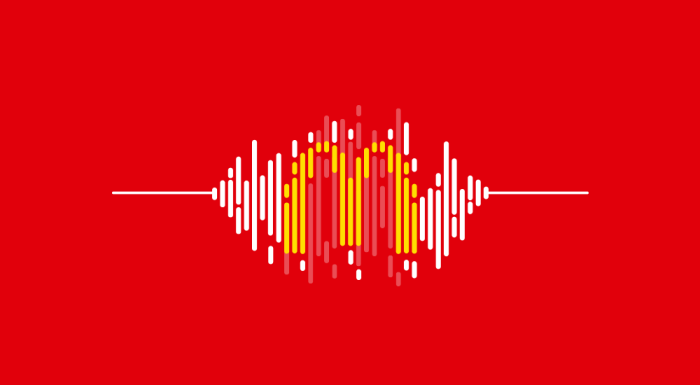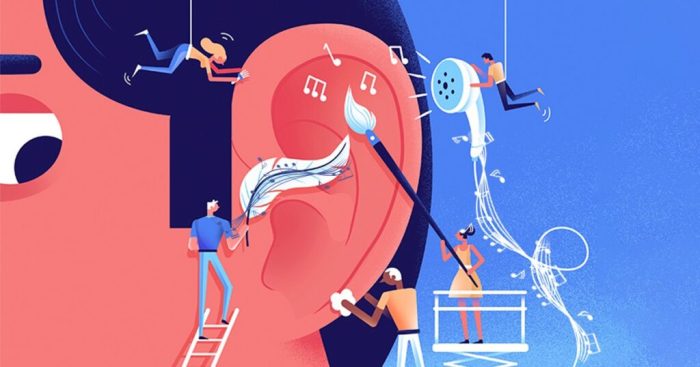In today’s saturated marketplace, a distinctive brand identity is paramount. While visual branding remains crucial, audio branding offers a powerful, often overlooked, avenue for connection. This exploration delves into five key principles for crafting a compelling sonic identity, transforming your brand’s soundscape into a memorable and impactful experience for your audience. We will examine how to leverage the emotional power of sound to resonate deeply with consumers and establish a unique brand presence.
From designing a sonic logo that encapsulates your brand’s essence to maintaining consistency across diverse platforms, we’ll navigate the practical aspects of audio branding implementation and measurement. This includes exploring the nuances of various musical genres and their associated brand personalities, providing concrete examples of successful campaigns, and outlining a step-by-step process for integrating audio branding into your marketing strategies. Ultimately, this guide aims to equip you with the knowledge and tools necessary to leverage the power of sound to amplify your brand’s message.
Defining Your Sonic Brand Identity

Crafting a memorable and effective sonic brand identity is crucial for establishing a strong connection with your audience. A well-designed sonic identity transcends mere background music; it becomes an integral part of the brand experience, shaping perceptions and fostering emotional resonance. This involves carefully selecting and integrating sound elements to consistently communicate the brand’s core values and personality.
Sonic Logo Design for a Fictional Company
Let’s imagine a fictional company called “Evergreen,” a sustainable clothing brand focused on ethical production and eco-conscious materials. Their sonic logo would aim to reflect their values of naturalness, tranquility, and reliability. The logo would begin with a gentle, sustained chord played on a mellow acoustic guitar – a sound that evokes feelings of calm and natural beauty. This is followed by a short, uplifting melody played on a flute, representing the brand’s optimistic outlook and commitment to a brighter future. The melody incorporates a subtle, repeating motif that creates a sense of familiarity and reinforces brand recognition. Finally, a low, resonant chime made of a natural material, such as Tibetan singing bowls, adds a grounding element that symbolizes the company’s connection to the earth. The combination of these sounds creates a unique and memorable sonic signature that encapsulates Evergreen’s brand essence. The overall effect is calming, reassuring, and subtly inspiring.
Musical Genres and Brand Personalities
Different musical genres inherently carry distinct emotional connotations, making them powerful tools for shaping brand personality. The strategic use of genre can profoundly influence how consumers perceive a brand. Consider the following:
| Genre | Associated Emotions | Brand Characteristics | Example Brands (Hypothetical) |
|---|---|---|---|
| Classical | Elegance, sophistication, timelessness | Luxury, prestige, heritage | High-end jewelry brand, luxury car manufacturer |
| Indie Pop | Youthful energy, creativity, individuality | Trendy, innovative, approachable | Fashion brand targeting young adults, tech startup |
| Jazz | Sophistication, coolness, creativity | Smooth, sophisticated, artistic | Premium coffee shop, art gallery |
| Electronic/Dance | Energy, excitement, innovation | Modern, forward-thinking, dynamic | Gaming company, sports apparel brand |
Successful Audio Branding Campaigns
Several brands have successfully leveraged audio branding to reinforce their message and enhance consumer experience.
One example is Intel’s “Intel Inside” jingle. The simple, memorable tune, instantly recognizable to many, effectively associated the brand with innovation and reliability. The use of a consistent, positive melody across various media created strong brand recognition and recall. Another example is the distinctive sonic branding of McDonald’s. Their iconic “I’m Lovin’ It” jingle, combined with the sounds of sizzling burgers and happy chatter, creates a strong association with feelings of happiness, satisfaction, and familiarity. The sounds evoke a specific emotional response that is instantly linked to the brand experience. Finally, Spotify’s use of personalized audio cues and playlists, tailored to individual user preferences, creates a deeply personal and engaging listening experience. This fosters brand loyalty by showcasing an understanding of user needs and providing a customized sonic environment.
Crafting a Consistent Sonic Experience Across Platforms

Maintaining a consistent sonic brand identity is crucial for building strong brand recognition and recall. A cohesive sonic experience across all touchpoints – from your website to your physical store – reinforces your brand’s personality and strengthens customer connection. Inconsistency, on the other hand, can lead to a diluted brand image and confuse your audience. This section explores how to adapt your audio branding for various platforms while maintaining a unified sonic identity.
Imagine “CoffeeBuzz,” a trendy coffee shop chain aiming to establish a vibrant and energetic brand image. Their audio branding, centered around upbeat acoustic guitar riffs and warm, inviting voiceovers, needs to translate effectively across their website, social media channels, and physical stores.
Adapting Sonic Elements Across Platforms
On their website, CoffeeBuzz utilizes a short, looping version of their main audio brand theme as background music. This creates a welcoming atmosphere without being intrusive. For social media, shorter, punchier audio snippets of the guitar riff are used as sound effects accompanying engaging video content. In their physical stores, a longer, more ambient version of the theme plays softly in the background, complemented by the sounds of coffee brewing and gentle chatter, creating a comfortable and inviting environment. The voiceover style is also adapted; the website uses a more formal tone for announcements, while social media uses a more casual, friendly tone. In the physical store, staff use a cheerful, welcoming tone for verbal interactions. These adaptations ensure the core sonic identity remains consistent while responding to the unique requirements of each platform.
Challenges of Maintaining Sonic Consistency and Their Solutions
Maintaining sonic consistency across diverse media formats presents several challenges. Different platforms have varying technical capabilities and limitations regarding audio quality, file sizes, and playback environments. For instance, the high-fidelity audio suitable for a website might be too large for social media platforms. Similarly, the immersive soundscape designed for a physical store wouldn’t translate well to a short video clip.
To overcome these challenges, CoffeeBuzz employs a multi-pronged approach. They create master audio files at high resolution and then create compressed versions optimized for each platform. They also utilize consistent audio editing techniques and adhere to specific branding guidelines across all platforms. They use a style guide that defines acceptable variations in volume, tempo, and instrumentation, ensuring the overall feel remains consistent. Finally, they regularly test and monitor their audio across all platforms to identify and rectify any inconsistencies.
Design of a Consistent Notification Sound
A short, memorable notification sound is essential for maintaining brand consistency across digital platforms. For CoffeeBuzz, the notification sound could consist of a two-note ascending melody played on a bright acoustic guitar, followed by a short, percussive “plink” sound. The melody should be easily recognizable and associated with the brand’s overall positive and energetic feel. The “plink” sound adds a sense of finality and completion to the notification. The choice of acoustic guitar maintains consistency with the brand’s existing sonic identity, while the concise nature of the sound ensures it is not disruptive. The use of only a few, clearly defined notes ensures it remains easily identifiable across different audio playback systems.
Implementing and Measuring the Impact of Audio Branding

Successfully implementing audio branding requires a strategic approach encompassing sound design, production, distribution, and ongoing measurement. This involves more than just creating a catchy jingle; it’s about crafting a sonic identity that resonates with your target audience and reinforces your brand message across all touchpoints. Effective measurement then allows for refinement and optimization of your audio branding strategy.
Implementing an audio branding strategy for a new product launch necessitates a well-defined plan. This involves careful consideration of the target audience, brand personality, and overall marketing goals. The process is iterative and requires collaboration between marketing, creative, and technical teams.
Step-by-Step Audio Branding Implementation for a New Product Launch
A phased approach ensures a smooth and effective implementation. First, define the desired emotional response and brand personality that the audio branding should evoke. Then, create a detailed brief for the sound designers, outlining the key sonic elements. This brief should include examples of sounds and music styles that align with the brand’s personality and target audience. The next step involves professional sound design and production, ensuring high-quality audio across all platforms. Finally, distribute the audio assets across relevant channels, such as websites, social media, advertisements, and in-store experiences. Regular monitoring and analysis are crucial to track the impact and make necessary adjustments.
Methods for Measuring Audio Branding Effectiveness
Several methods exist for assessing the impact of audio branding, each with its strengths and weaknesses. Qualitative methods, such as focus groups and surveys, can provide valuable insights into consumer perception and emotional response to the audio branding. Quantitative methods, such as brand recall and recognition tests, can measure the effectiveness of the audio branding in creating brand awareness and improving brand recall. A combination of both qualitative and quantitative methods provides a comprehensive understanding of the audio branding’s effectiveness.
For example, a brand could conduct A/B testing with different audio branding elements in online advertisements. They could measure click-through rates and conversion rates to determine which audio branding elements are most effective. Furthermore, tracking social media mentions and sentiment analysis of the audio branding can offer insights into consumer perception. Metrics like brand awareness, brand recall, and emotional connection can be used to measure the impact. Measuring website traffic increases related to audio-based ads provides further insights.
Hypothetical Marketing Campaign Integrating Audio Branding
Imagine a new line of organic, sustainably sourced coffee called “Earth Brew.” The campaign, “Wake Up to a Better World,” uses a calming, natural soundscape as its core audio element. This soundscape, subtly incorporating bird song and gentle water flowing, is woven into all campaign touchpoints.
- Phase 1: Teaser Campaign (Social Media): Short, atmospheric videos featuring the soundscape and visually stunning nature shots are posted on Instagram and Facebook. The videos end with the tagline, “Wake Up to a Better World,” and the Earth Brew logo.
- Phase 2: Product Launch (Website & Print Ads): The website features the soundscape as background music, enhancing the user experience. Print ads include a QR code that plays the soundscape when scanned.
- Phase 3: In-Store Experience (Retail): Stores playing the soundscape create a relaxing and inviting atmosphere. Small, branded cards with the QR code are placed near the coffee displays.
- Phase 4: Radio & Podcast Ads (Audio): Radio and podcast ads feature the soundscape alongside a voiceover highlighting the coffee’s unique qualities and sustainable practices. The ads end with a clear call to action.
The calming soundscape enhances the campaign message by reinforcing the brand’s commitment to sustainability and promoting a sense of tranquility and well-being associated with the coffee. The consistent use of the soundscape across multiple platforms creates a cohesive and memorable brand experience.
Epilogue

Mastering audio branding transcends simply adding background music; it’s about crafting a holistic sonic experience that reinforces your brand’s identity at every touchpoint. By understanding the principles of sonic identity, leveraging the emotional impact of sound, and consistently applying these strategies across various platforms, you can cultivate a deeper connection with your audience. The result? A more memorable, impactful, and ultimately, more successful brand. This journey into the world of sonic branding empowers you to harness the untapped potential of sound to elevate your brand to new heights.